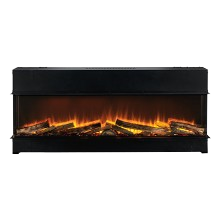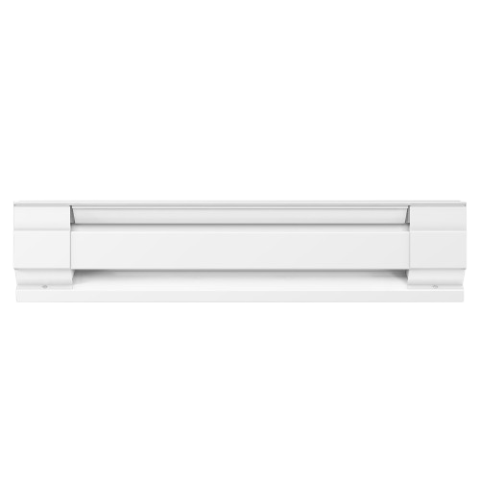
3 Myths Demystified About Electric Baseboard Heating
Electric heating is a great way to heat your home and can be used as a primary or secondary source of heat. It’s safe, efficient, environmentally friendly, and easy to install. Plus, there are a variety of different electric heaters designed specifically for different home heating applications.
Of these, baseboard heaters are one of the most universal choices because of their silent operation, low cost to purchase, and easy to install. New advances in technology have improved baseboard performance and made them more compact and energy efficient, making them even more popular.
Slimmer profiles and shorter lengths make the new generation of baseboards more design friendly and gives back wall space that would have been taken up with their much longer predecessors.
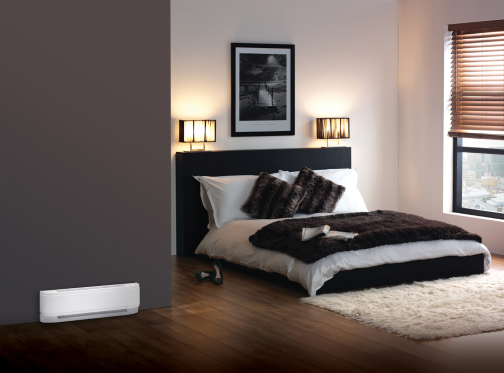
Myth # 1: Baseboard heaters have to go under the window.
Traditionally, baseboard heaters were always located under a window to create a warm air curtain that acts as a draft barrier. With advances in window efficiency and improvements in baseboard performance, this is no longer necessary. Dimplex Convector Baseboards can be located anywhere in the room including behind furniture, with as little as three inches of clearance. Because of their top vent design, warm air is directed straight upwards, so there is much less chance of blocking the airflow as there was with traditional, front exhaust baseboards.
If you live in an older home with drafty windows, the best place for your baseboard is still under the window. However, if you have newer, energy efficient windows, the good news is that you have much more flexibility with where you locate your heater.
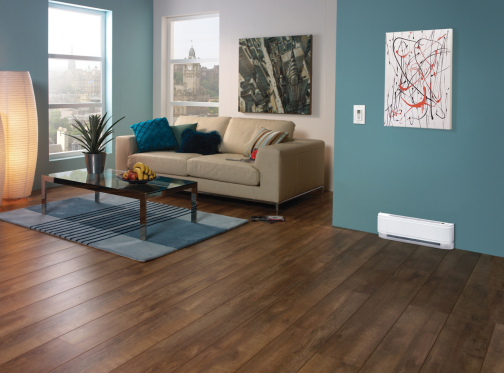
Myth #2: Bigger is Better.
The rule of thumb for sizing a baseboard, or any electric heater, was 10 watts per square foot. So if you have a 10 x 10 room you would need a 1,000 watt heater. With improvements in home construction, specifically insulation and air tightness, that rule of thumb is now 7 watts per square foot. Because baseboards have traditionally been slow to heat a room, many electricians would install a higher wattage heater than was necessary, based on the size of the room.
The Dimplex Convector Baseboards produce up to 40% faster airflow than old fashioned baseboards, so the lower 7 watts/square foot rule of thumb can safely be used without sacrificing any comfort in order to achieve maximum energy efficiency. In fact, tests show that Convector Baseboards heat a room twice as fast as a traditional baseboard so you don’t have to overdo it when picking the right baseboard for your room.
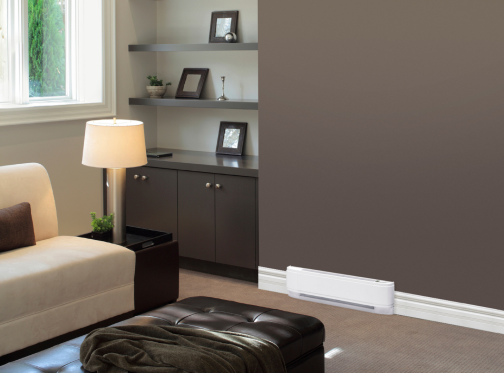
Myth # 3 Electric Heating Harmful to the Environment.
Just like fully electric automobiles, electric heating is the future of a cleaner, more sustainable world. And you may be wondering, will you have to pay more for that low carbon future? The good news is that energy analysts have recently proclaimed that renewable energy (wind, solar, etc.) has reached a tipping point where it is just as cheap to produce a kilowatt of clean energy as it is to produce energy by burning fossil fuels.
This is great news for both the planet and your energy bill since electricity costs are predicted to decline as we increase our capacity to produce clean, renewable electricity. So, you can feel good when you choose electric heating by knowing that you are making a safe, efficient, and comfortable choice today that will also have a positive effect on the future.
Interested in an electric baseboard heater for your home? Dimplex offers a variety of options and styles that will fit any space and budget, see the entire collection online or find a retailer near you.
